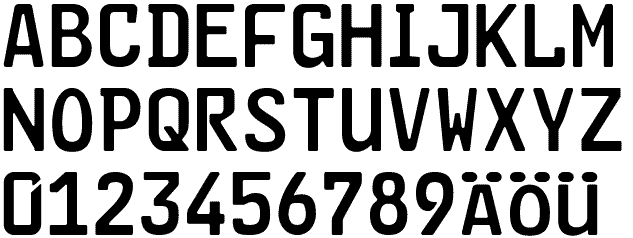Ciekawostka, z wykładu w Bachotku. Krój, którym są -- nazwijmy to -- składanie tablice rejestracyjne w Niemczech jest dość specyficzny. Nie mając pojęcia do czego służy ww. font można by pomyśleć że to jakiś niedorobiony produkt amatora: litery ,,z różnych parafii'', jedna z szeryfami drugie nie, znaki w innych krojach optycznie podobne tutaj są specjalnie różne....
It was designed by Karlgeorg Hoefer for the German government in the late 1970s in the light of Red Army Faction terrorism when it was discovered that with the then-standard font for vehicle registration plates--the road sign font--it was particularly easy to modify letters by applying a small amount of black paint or tape. For example, it was easy to change a "P" to an "R" or "B", a "3" to an "8", or an "L" or "F" to an "E". Modifications to FE-font plates are somewhat more difficult, as they also require the use of white paint, which is easily distinguished at a distance from the retroreflective white background of the plate, in particular at night. Faked FE-Schrift letters (e.g., "P" to "R") appear conspicuously disproportionate.
Podrobić trójkę z ósemki, zamalowując kredą połowę znaku, jak to zrobił Hans Kloss w 17 odcinku SWNŻ (Akcja liść dębu) byłoby dużo trudniejsze. Dla porównania w większości fontów wygląda to tak: 88/33 (zakładam, że sz. czytelnik używa normalnego kroju w przeglądarce).

Brak komentarzy:
Prześlij komentarz